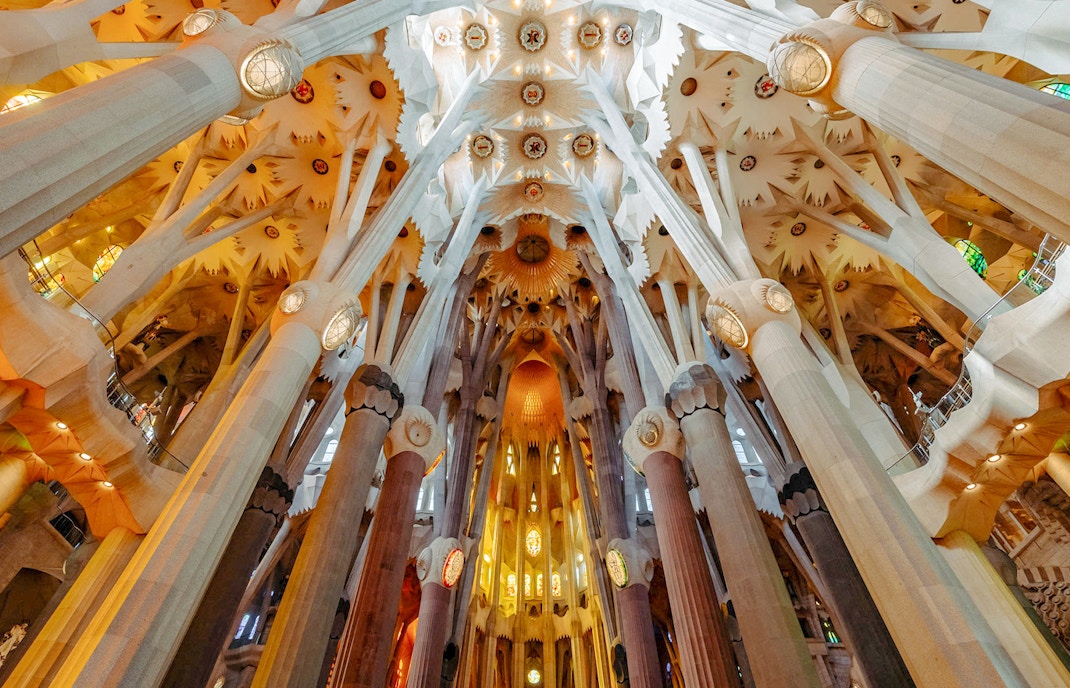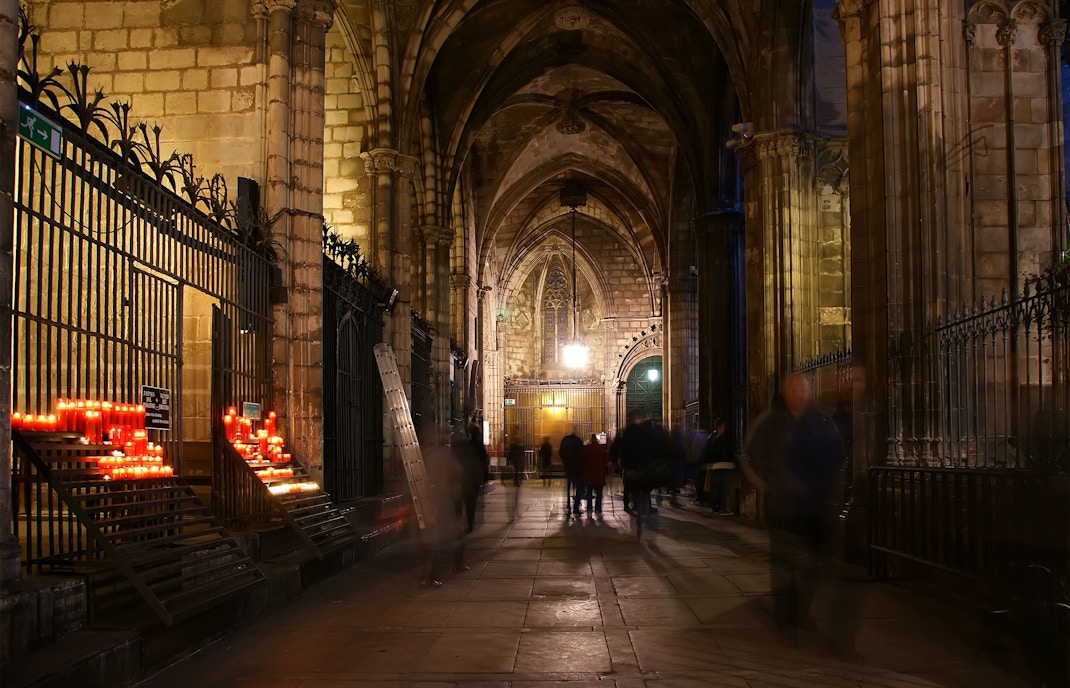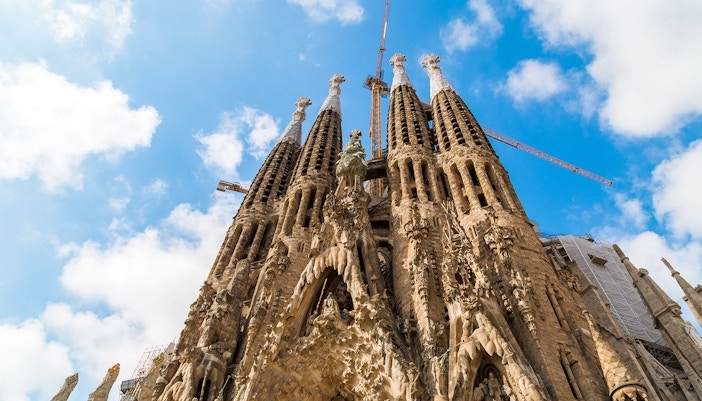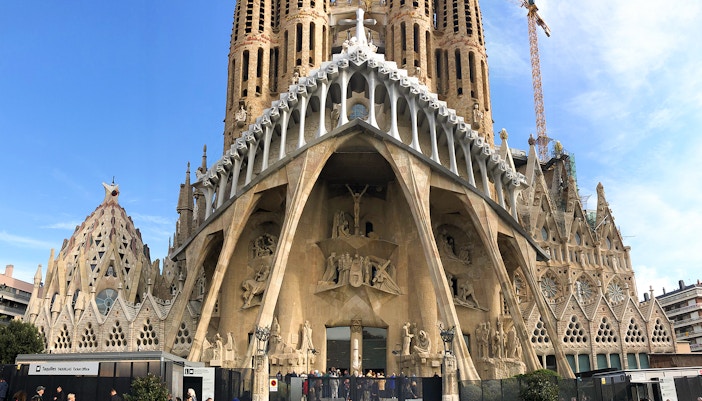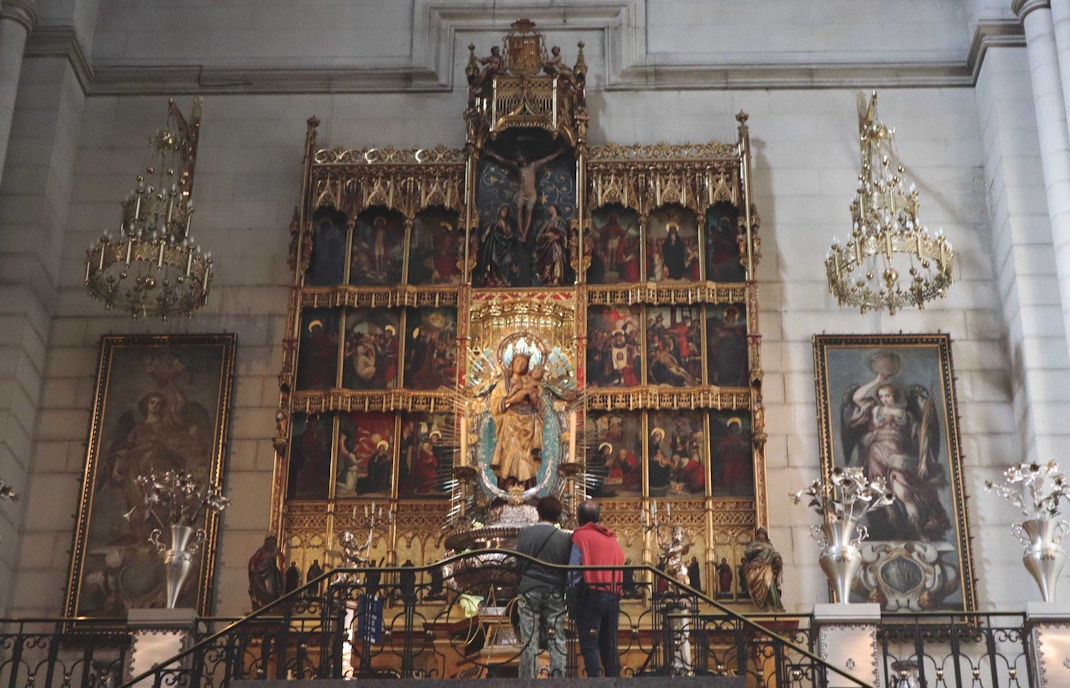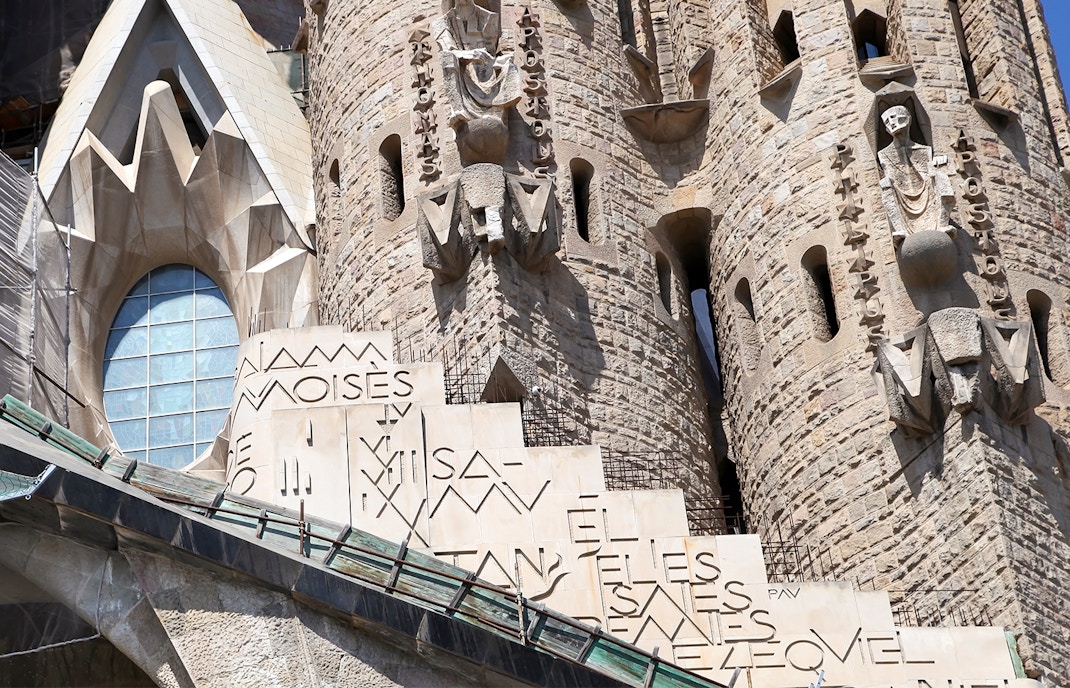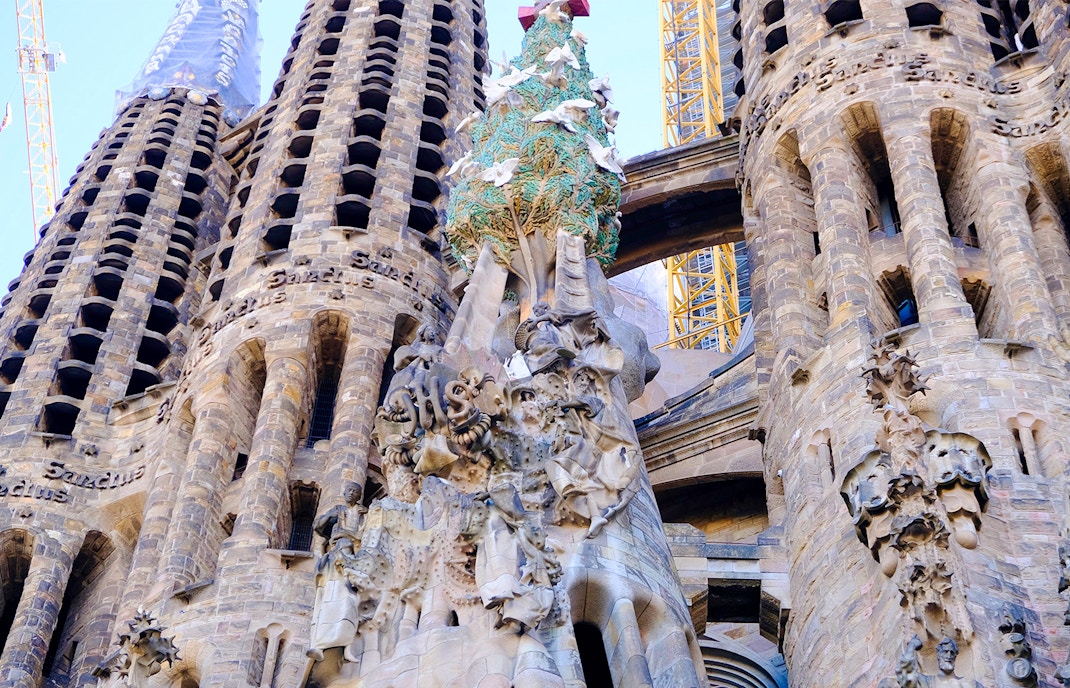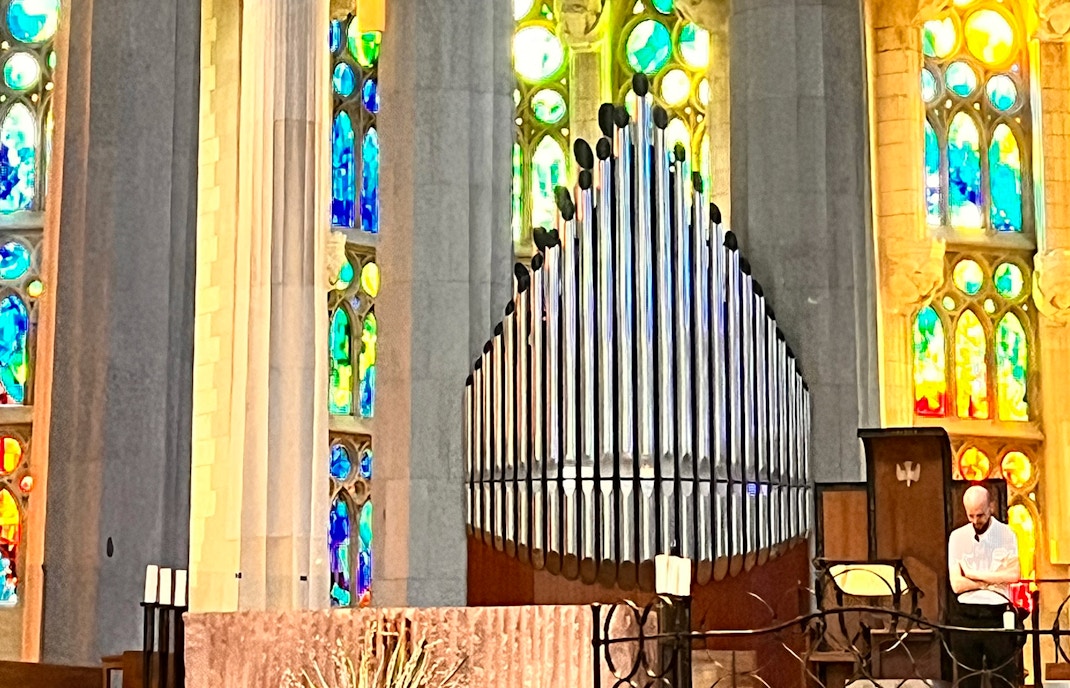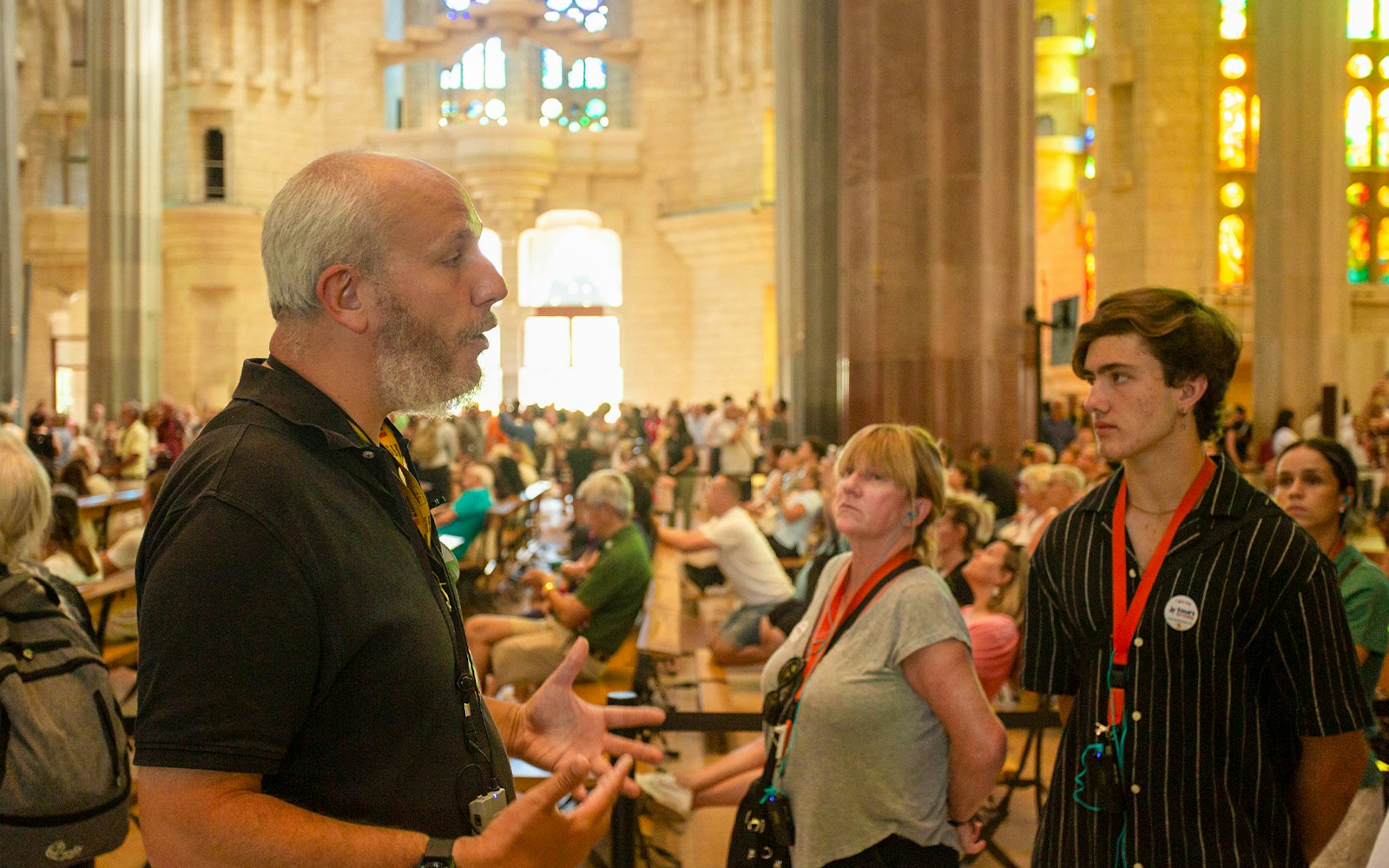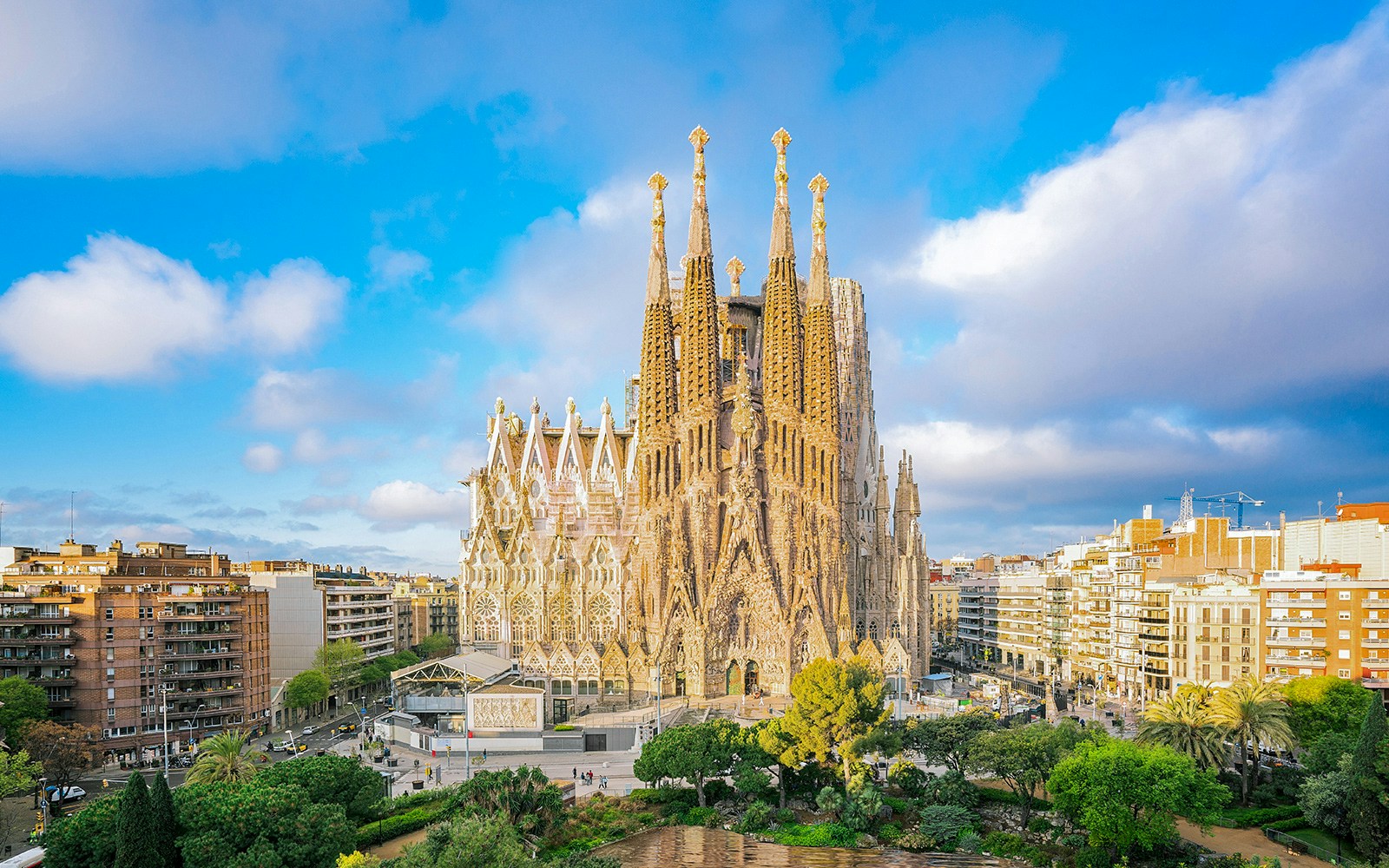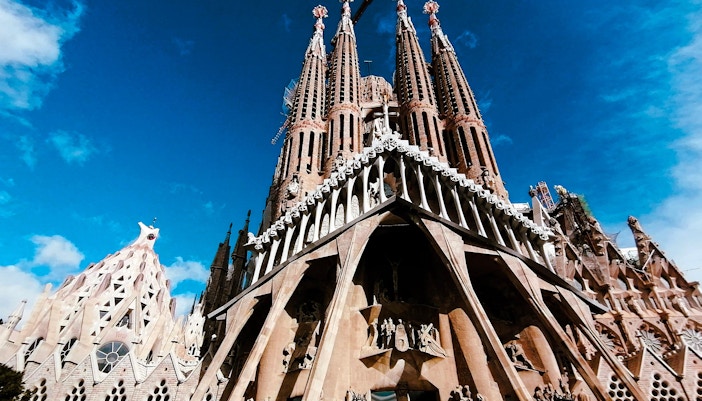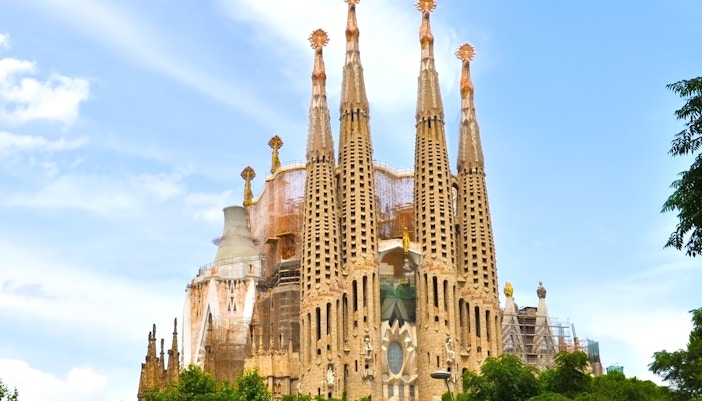The nave is the beating heart of the basilica. Its spacious design was intentional, Gaudí wanted visitors to feel free to move, think, and worship.
From here, you get a panoramic view of the soaring forest of columns, glowing stained glass, and vaulted ceilings. Stand in the center, spin slowly, and notice how no two views are alike, Gaudí avoided straight lines on purpose to create organic asymmetry.
